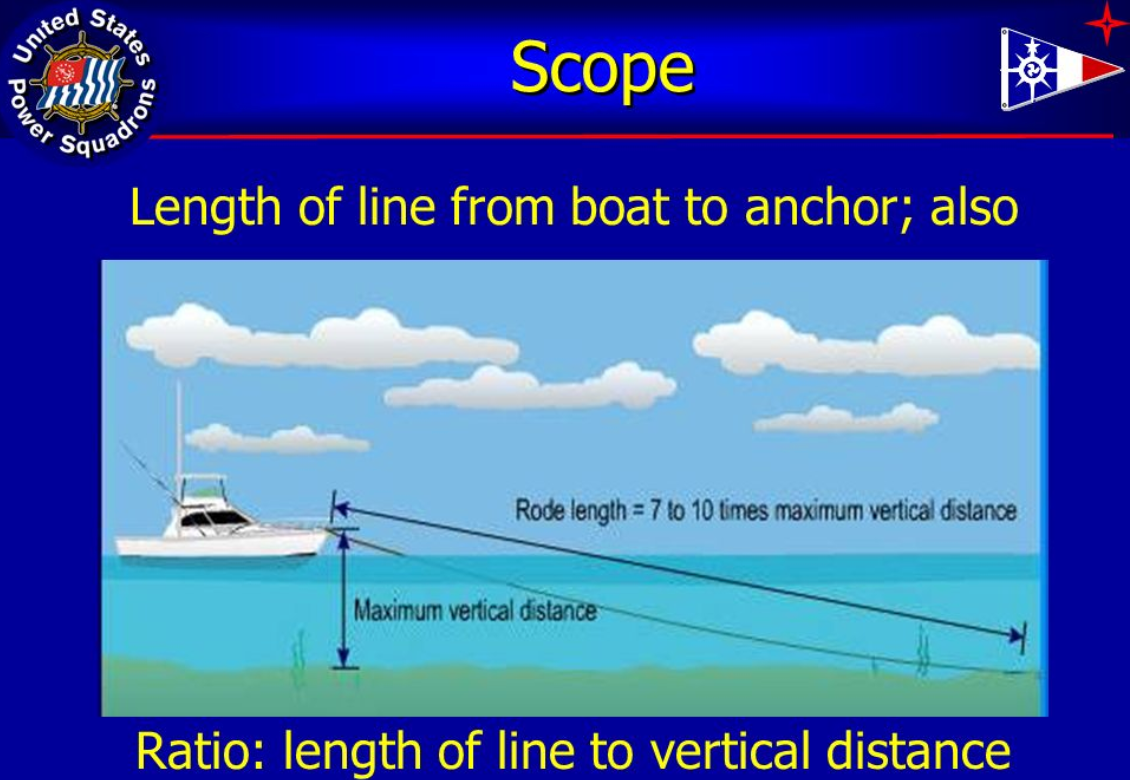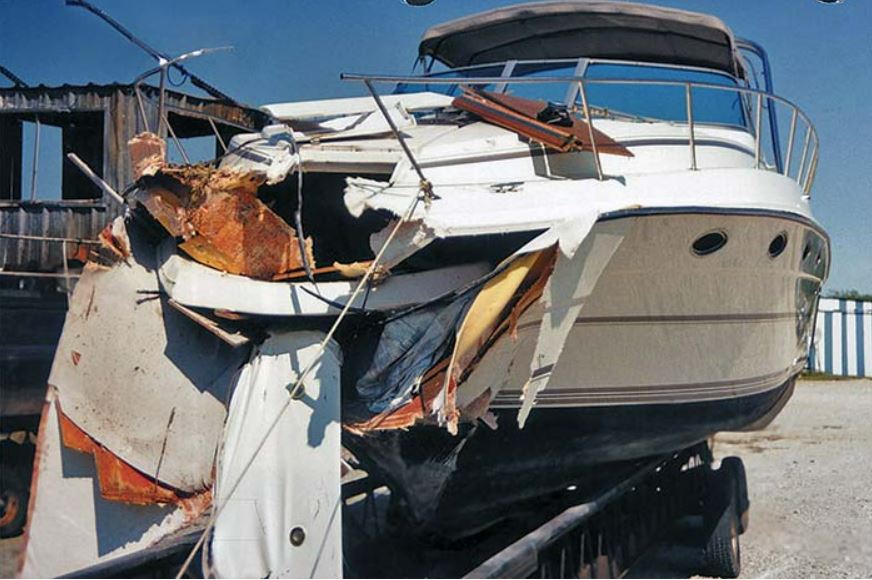 BoatTest.com
BoatTest.com
Apr 26, 2022
ARTICLE COURTESY OF PACIFIC POWERBOAT MAGAZINE
Learning good anchoring etiquette is an important, fundamental skill of seamanship that every boat owner needs to master. The ability to moor safely comes from the ability to firmly set an anchor. Setting an anchor is not difficult, it just takes a little time and patience. You can’t just roar into an anchorage and throw your anchor over the side as soon as you are about where you want to be parked up. There are some simple rules and etiquette that you should observe to make anchoring easier and less embarrassing.
Don’t blast into the anchorage. Approach slowly and watch for channel markers, small sailboats, kayakers, windsurfers, snorkelers and underwater obstructions. If you are unfamiliar with the area, carefully drive through the anchorage once or twice and assess everything – prevailing wind, how other boats are hanging, how much they are swinging and which way the current is running.
Common Sense Goes a Long Way
Be safety conscious and pick a spot that is not too close to another boat, which can be difficult in a popular area. The general rule is that there should be enough room between anchored boats to allow them to swing 360 degrees without hitting each other. The boater who is already anchored has the right to ask you to move if they think you are too close — don’t argue, just move. If you stay, you could be liable for any damage if your boat’s hit.

Don’t anchor on top of another boat when you are in a secluded place. Many of us are looking for privacy, which is not easy to find. If you discover a boat in “your” hideaway, be considerate and anchor as far away from it as you can. If the other boat’s stereo volume increases to an ear splitting level as you approach or if a naked guy stands up and stares at you, consider yourself warned to back off.
Make certain that the crew is ready to anchor. “Ready” means that someone is on the bow to serve as lookout and to set the anchor if necessary. It also means that the anchor is ready to deploy — the anchor is shackled to the chain, the chain is shackled to the anchor rode (make sure the rode will run fair) and — most importantly — the bitter end of the rode is firmly attached to the boat. Check the water depth, calculate how much rode you need, pay out the rode and snub it off. The person setting the anchor should always communicate with the helmsman, with either hand-signals or voice, so the skipper will know exactly what is happening on the foredeck.
The Correct Procedure
If you have a windlass and a chain counter then much of the hard work is already done, but you still need to make sure everything is set right and secure. There’s nothing worse than having to get up in the middle of the night because you’re drifting through a parking lot of moored boats because you didn’t take the time to make sure you’re anchor was firmly set.

The length of the rode payed out is called the scope. If you think about the goal of keeping the anchor down in the mud, sand or whatever the bottom structure is, you quickly realize that more scope is better. Scope is measured as a ratio, the length of the rode compared to the depth of the water. In calm weather, a scope of 5:1 is sufficient. Placing an anchor in 49’ (15 m) of water and using 246’ (75 m) of rode would equate to a 5:1 scope. Normal anchoring situations call for a 7:1 scope and boaters should consider a scope of up to 10:1 in heavy weather.
Back down easy at first — once the anchor rode is cleated off or locked in the capstan. Backing down will either power set your anchor or let you know that you need to try again. Don’t panic if the anchor is not set. Pay out a little more rode — failure to put out enough is a common mistake — and back down again. If that doesn’t work, pick up your gear, evaluate the situation and try again. Don’t scream at your crew. They are most likely your family and friends and you probably would like to keep them as such. While screaming and foul language may amuse nearby boaters, neither will endear you to your crew … and if you act like a jerk too often, eventually no one will go out and play with you.
Take a sight bearing and visually check the anchor once it is set. Before you leave the boat, look around and see where you are relative to a fixed object. Refer to that object from time to time to make certain the boat hasn’t moved.
Even when you are confident that the anchor is firmly set, it still pays to make periodic checks just to make doubly certain that you are not moving. It can be deceptive at night so for peace of mind it pays to check often. Don’t be embarrassed to ask for help. Can’t get a good set? Get some help from the people on the next boat over — the ones who have been alternately entertained and horrified while watching you screw up for the past 30 minutes. They are probably desperate to offer you their assistance so they can relax and quit worrying about your boat hitting theirs.

Interestingly, different size and shapes of boats, be they power or sail, swing differently and you may be in a bay that has a number of wind shifts that upset the uniform swing of the boats in the bay. Always consider an exit option just in case the weather conditions change overnight and you need to move out for another anchorage. When doing this you should also take note of the tides, because when the tide is low it may not be possible to retrace your passage in.
The process of retrieving an anchor is nearly the reverse of placing it. If everything is right in the world, the rode will be vertical in position and the flukes of the anchor will come free of the bottom. If the anchor doesn’t come free immediately, there are a couple things that can be tried. Have the operator reposition the boat to give the anchor stock a pull from a different direction. A couple of pulls from different angles is usually enough to solve the problem. Another trick is to use an anchor trip line. Most anchors have an attachment point for a trip line. It is at a point on the anchor where a pull on the line will back the anchor out of the bottom.
10 Tips for Anchoring
Get To know Your Equipment
You’d look pretty sheepish if you were trying to anchor in 98’ (30 m) of water with only 82’ (25 m) of rode. Don’t laugh — it happens more than one might think. Take the time to know your equipment, including the lengths.

Remember Anchoring is Different for Each Boat
Be aware that not all boats are the same so they will do different things while at anchor. Don’t expect all the boats to behave just like yours so make allowances for this when deciding where to throw your anchor over. For example, larger yachts with deeper keels are affected by tidal flows sooner than smaller boats with less draft. Wind affects taller with flying bridges more than low-profile boats. These factors mean boats will hang off anchor differently.
Secure The Anchor
When you have just anchored, spend some time to make sure that the anchor is well dug in before jumping in the dinghy and heading off to shore or visiting neighboring vessels. This can save much grief later, possibly including a visit from the very angry 7’ (2.13 m) tall owner of the boat next to you whose $50,000 paint job has just been trashed as your boat bounced down the side.

Be Mindful Of Others
The usual custom when anchoring in a bay is ‘first in, first served.’ If you anchor and the wind or tide changes and you get too close to someone else who was there first, you are the one expected to move. If you are the last in, this may be ‘suggested’ to you.
Avoid The Clunk Clunks
If you are anchored on all chain, a snubber is highly recommended. A snubber is a length of rope, often with a chain hook on the end. This will stop that annoying clunk, clunk of the chain in the fairlead all night.
Take The Load Off When The Weather Turns
If you use a windlass and the weather and/or wave action gets up, take the load of the rode off the windlass and attach to a cleat. That is easy with rope but if you have all chain, get a chain snubber. You’ll be pleased you did. When your boat bounces on the rode, the windlass’ winch and gearbox take a pounding. Fitting a chain snubber is much cheaper than replacing worn gears.

Be Mindful of Noise
Sound travels really well over calm water. Just remember that when setting the stereo volume control or you have a new girlfriend aboard. It’s probably better to be mindful of excess noise, especially on those calm nights.
Watch For The Big Raft-Ups
If you see a big raft-up (a group of boats tied together in one group sometimes hanging off one or two anchors) going on and you want a quiet night, don’t anchor by it. The chances are there will be intense “discussions” going on long into the night. The volume is usually directly proportional to the number of boats in the raft-up.
Anchor Windlass Tip On Motor Use
Use your windlass only with the motor running. Windlasses are gluttons for amps and can drain the batteries, given a chance. If you have given the winch a good run it can be advisable to run the motor for a bit to top up the batteries afterwards.

Using the Windlass
Anchor windlasses are made to pull up anchors from the seabed and not boats to the anchors. If you are anchored in a breeze or tide, use the motor to idle up to the anchor and then use the winch to pull up the anchor. Winching the boat up to the anchor puts the windlass (and batteries) under unnecessary load, causing circuit breakers to blow and excess equipment wear at best.



